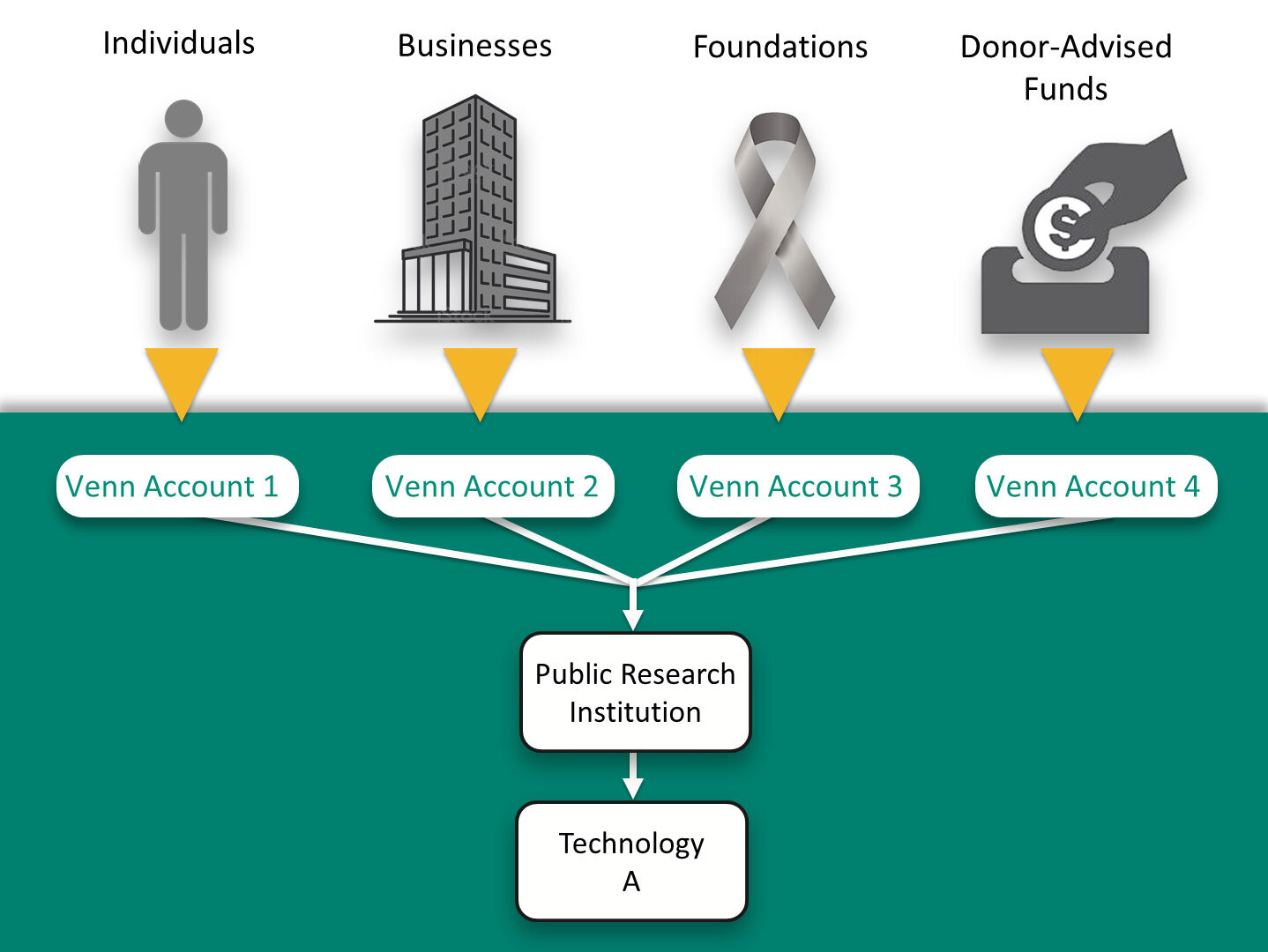PRIs in Technology Transfer
What is “Technology Transfer”?
Each year, billions of public and private dollars flow into universities and other public institutions to fund research.
It is the job of Technology Transfer Offices (TTO) inside of these institutions to protect the discoveries created from that research and then to license them to companies for commercialization.
Simply put, these offices “transfer technology” from the lab to the market for the benefit of the public.
What is the “Commercialization Gap”?
Transferring technology is not easy. Many promising discoveries that come out of the lab are not ready for licensing. And once initial research grants run out, public research institutions have limited resources to advance them further.
The sad result is that many promising cures and impactful technologies die in what's called the "Commercialization Gap."
Helping more technologies through the Commercialization Gap is a strategic priority for the entire technology transfer industry.
Venn model for PRI Syndication in Technology Transfer
PRIs are uniquely suited to help advance promising discoveries through the Commercialization Gap. By definition, PRIs go where normal for-profit capital won't yet go but where financial return is possible.
Venn now can establish a “Master Agreement” with any public research institution. This allows Venn to syndicate a PRI for any technology in the institution’s pipeline under the same legal framework and with the same financial terms. The institution then uses those funds to help that particular technology hit key milestones needed to attract a licensee.
If the institution goes on to license the technology and earns revenue, it will split it with Venn on a 50/50 basis up until set multiple return of the original Venn funding. After applying a success fee, Venn will allocate this return pro rata to all participating donor accounts, where donors can then recommend redeployment of those dollars into new PRIs or grants to nonprofits.
If the institution cannot license the technology, the PRI becomes a normal grant. In other words, there is only upside!
First Partner:
University of Minnesota
In February 2020, Venn Foundation established its first “Master Agreement” with University of Minnesota Technology Commercialization (TechComm).
Venn and TechComm are working together to match potential donors to promising technology projects they care about. Two funded PRI projects include:





